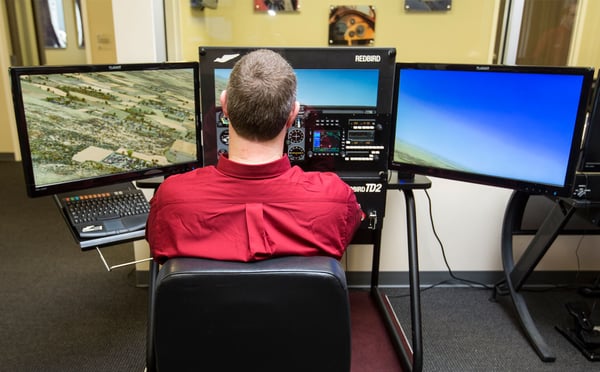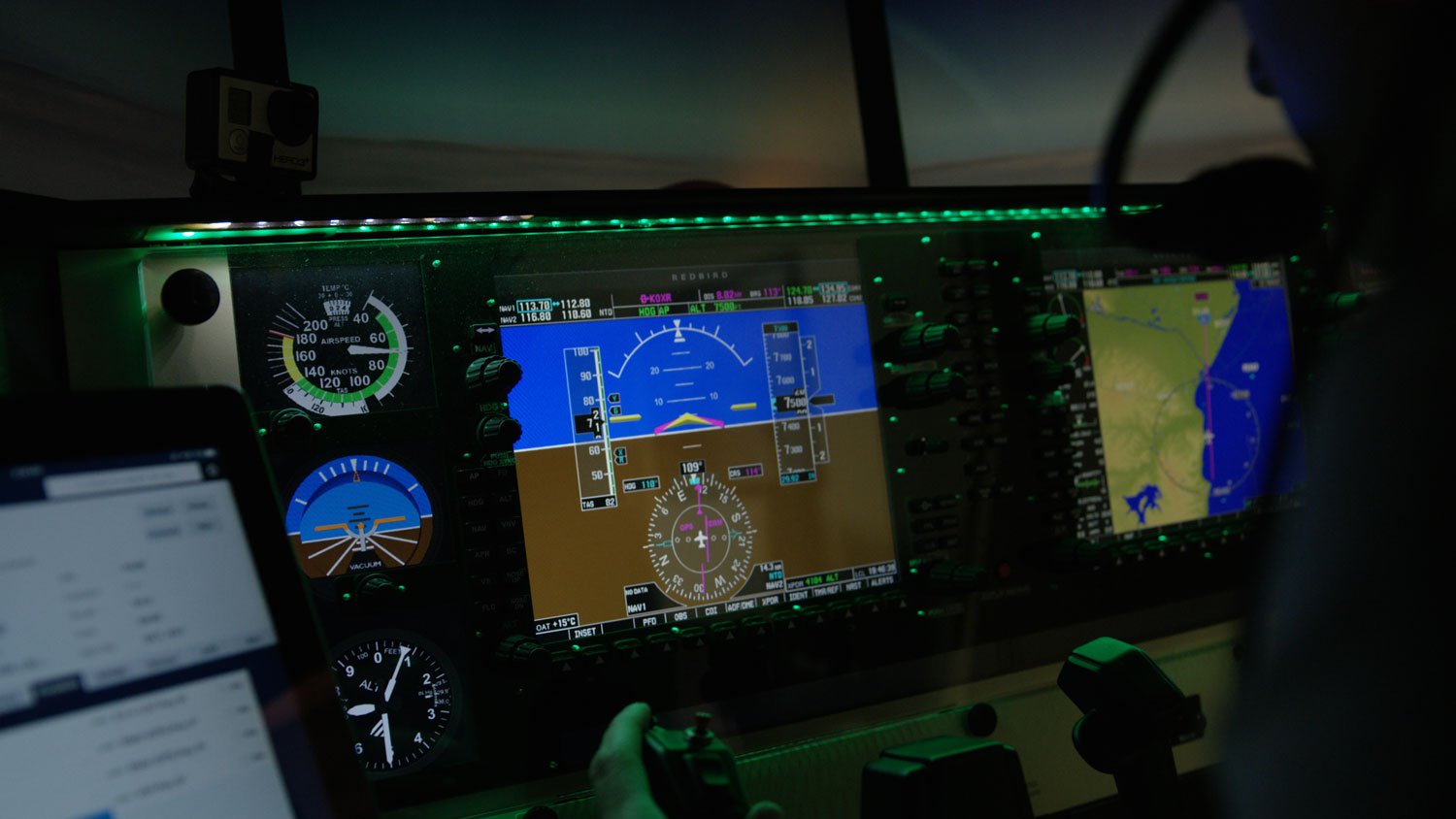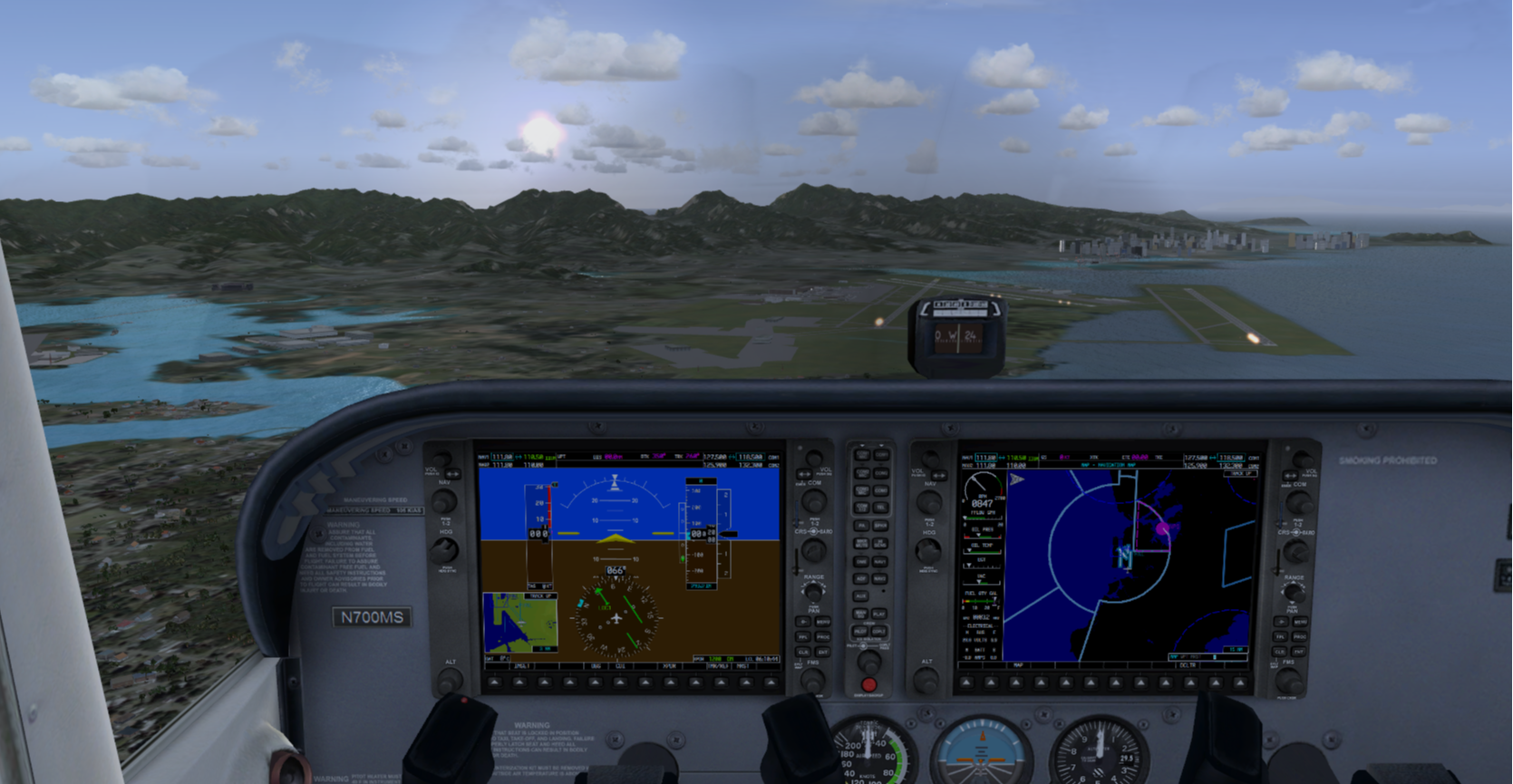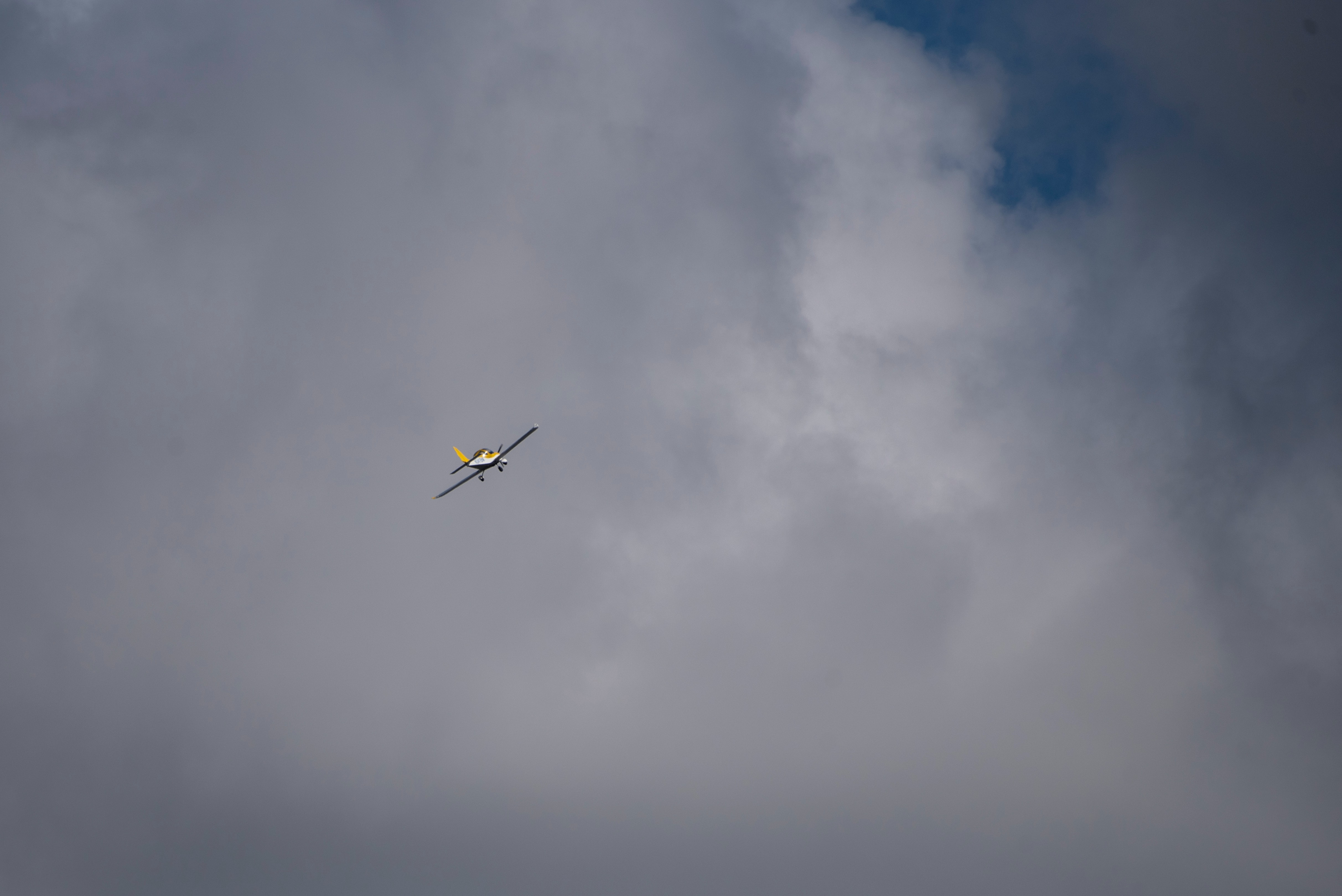How to Solve Bad Flying Habits With Your Home Flight Simulator
To avoid bad habits with your home flight simulator, you should abide by all the same checklists and procedures that you use in your airplane. However, the limitations of many home flight simulators still could prevent you from flying correctly. As you gear up for a new year of flying, there are a few upgrades you can make to your flight sim to solve the most common bad habits.
Staring at the Instrument Panel
This is the most common habit of flight simulator enthusiasts that flight instructors have to break during initial training. When you use a single-screen flight simulator, it is natural to look straight ahead with your eyes on the instruments, which may occupy half the screen, but overusing the instruments can adversely affect your visual scan technique. Fortunately, as simulation technology continues to advance, there are a few products you can buy to help keep your head on a swivel at home.
The cheapest upgrade you can make is to your flight simulation software. With each new version of Prepar3D, X-Plane, and Microsoft Flight Simulator, updates to the graphics and scenery improve the training environment for VFR flying. The photorealistic scenery in Microsoft Flight Simulator 2020 makes it easier to keep your eyes moving and off your instruments.
However, to improve your situational awareness while you fly your simulator, you may need to expand your field of view with a three-screen setup. Peripheral monitors provide cues that enhance your training for climbs, steep turns, turns around a point, identifying traffic, engine failure emergency procedures, crosswind landings, and many other ground reference and nose-up maneuvers.

Virtual reality (VR) headsets continue to show promise as a solution for simulated VFR flying as well. Yet, while current VR flight simulator equipment can make visuals more expansive and immersive outside the cockpit, it also can make interacting with your controls and panel more challenging.
Underusing Your Rudder Pedals
Infrequent or inconsistent use of your rudder pedals can create bad habits during all phases of flight. When you train with your home simulator, you should still remember to use the right rudder during the climb, help control your speed with the pedals during the cruise, use rudder in the direction of a turn, and focus on the correct rudder inputs during the approach and landing—applying opposite rudder to center the nose of the aircraft when necessary.
While it is possible to stay in the air with little to no rudder usage on a home flight simulator, the psychomotor effects of that behavior can cause problems in an airplane. In addition to struggling to say in coordinated flight, flight simulator pilots who underemphasize proper rudder inputs tend to have issues with side slips and related skills.
Beyond simply using rudder pedals with your home flight simulator, upgrading to realistic pedals with more capabilities can help you derive more psychomotor benefits from your simulator practice. Metal rudder pedals that have a full range of travel, differential toe brakes, and that allow you to apply pressure are essential to creating a realistic cockpit environment at home.
Related Content: How to Set up a Home Flight Simulator
Flying in Silence
Push-to-talk phobia affects most pilots at some point in their flying, and it can worsen by neglecting air traffic control (ATC) communications in the simulated world. While the ATC capabilities of most flight simulation software aren’t advanced enough for real flight training, services such as PilotEdge allow you to fly in a simulated air traffic control system where you can see other aircraft, hear other pilots on the radio, and communicate with controllers. Pair one of these services with a conversion box that allows you to use your aviation headset with your home flight simulator, and you’ll be ready to call for taxi.
Share this
You May Also Like
These Related Articles

Summer Vacation Flying: You Don’t Have to ‘Wing It’

5 Tips to Stay Proficient on a Home Flight Simulator
